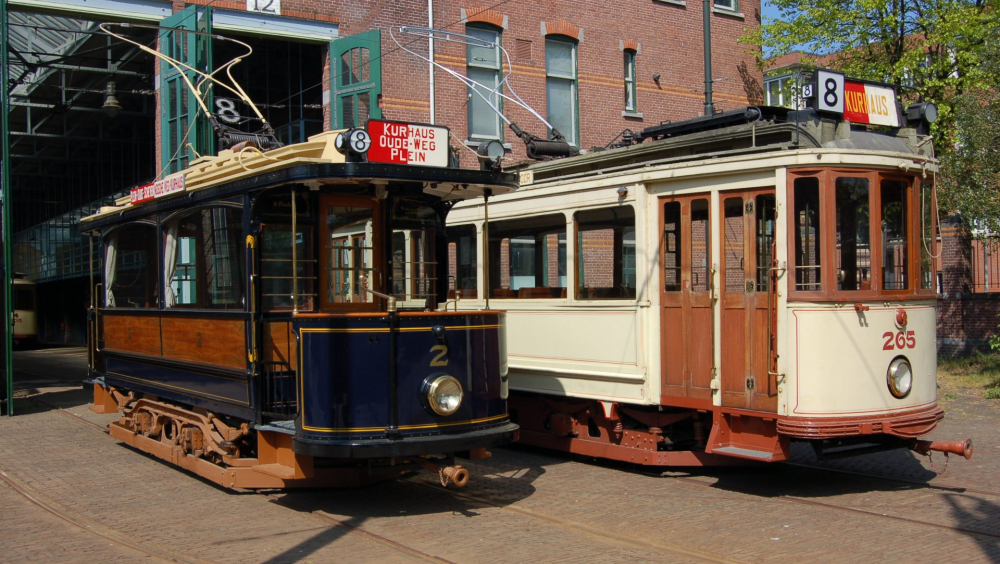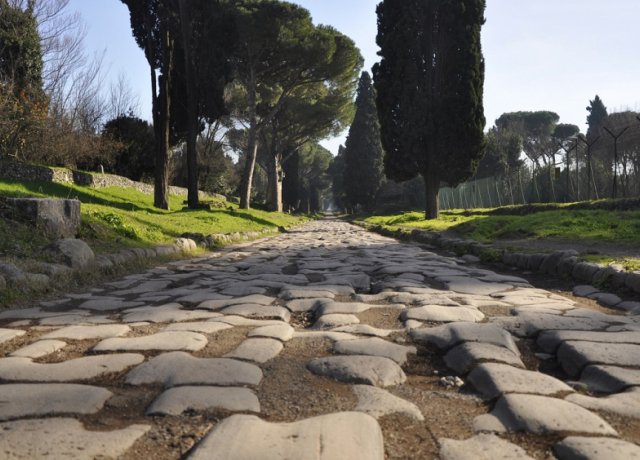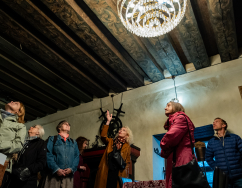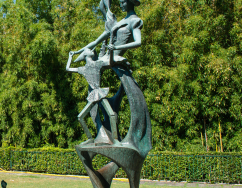European Heritage Days Article:
Unlocking Cultural Connections: A Guide for Organizers to Harness Physical Routes and Networks in 2024 Events
European Heritage Days Article:
Unlocking Cultural Connections: A Guide for Organizers to Harness Physical Routes and Networks in 2024 Events
Photo: Guided tours on Via Appia Antica, Rome 2023 (credit, Roman Archaeological Group)
This article takes a look at types of tangible routes such as transport networks, wildlife migration paths and communication systems to help provide inspiration for planning events within this year’s theme.
Trade Routes and Nautical Networks: The Silk Road to Maritime Routes
Some of the most historic routes were established to enable trade and have been used to move raw materials, foods and manufactured goods between places since ancient times. A famous example is the Silk Road which facilitated the trade of luxury goods between Europe and Asia for more than a thousand years. Events might look at the trajectories and places along routes like this and examine how these trade connections influenced the development of their area and culture. A specific event idea explained in this year’s Routes, Networks and Connections brochure is to organise an interactive game where participants experience the challenges of building trade networks through navigating trade routes and negotiating deals.
As well as the destinations and trading points on land, nautical routes have also provided trade connections for millennia. One example presented by the Cultural Routes of Europe is the Phoenicians’ Route which tracks the maritime routes of these merchants, linking over 100 towns across the Mediterranean and beyond since the 12th century BC. Events could highlight the significance of routes like these and the role of international port cities across history. Local river routes as well as man-made waterways such as canals could also provide inspiration for events from map making workshops to boat rides or riverside walks. Working with museums, events could showcase their collections, and organisers could use other resources for inspirations such as the European Network of River Museums which connects 15 museums across Europe specialising in telling stories about waterways and preserving a unique collection of boats and vessels.
Cultural Journeys: Migration and Pilgrimage Routes Through Time
One of the ways Routes, Networks and Connections builds on last year’s Living Heritage theme is recognising how cultural heritage is kept alive and evolves over time with the movement of people. Migration is therefore an important topic to consider, and events could be based around researching and mapping migration routes or discussing and sharing the experiences of those who have travelled them. This might look at major emigration or how industry and economic factors attract people and communities towards new places. A relevant case study from the European Heritage Days Stories initiative is Celebrating Great Yarmouth's Migrant History which tells the story of the arrival of Portuguese migrant workers to the UK’s poultry processing factories over the past twenty years. The routes of other types of journeys can also be highlighted this year, such as pilgrimage ways. One of the examples highlighted by the Cultural Routes of Europe is the Route of Saint Olav Ways which traces the network of routes through Northern Europe used by 11th century pilgrims onwards to the site of Saint Olav’s burial in Norway.
The Evolution of Roads and Transportation

Some of the most visible routes which can be included as part of this year’s theme are transport networks. These routes and roads are the very connections which have brought communities together throughout history. Events could look at their development from Roman roads to modern highways and town planning based on car usage. The heritage of public transport, such as railroads, tramlines and ferries could also provide inspiration; a helpful resource for planning events about railways can be found by looking back at the European Year of Rail which took place in 2021 with a range of events, activities and stories. Events could include opening the doors of historic transportation hubs to show how the creation of these networks helped to shape the history of their destinations and connect communities. Other events could involve researching and walking along ‘forgotten’ routes such as paths, roads or disused railway lines. Air travel and the impact of the new routes it has enabled could also be helpful as a topic, particularly for examining international connections and the ongoing growth and development of transportation networks in modern times.
Tracing Nature's Pathways: Wildlife Migration and Ecological Routes
Many physical routes are impacted by the natural landscape. Events could look at traditional routes and how these have been impacted by the geography surrounding them such as following the course of rivers, using geological features as waypoints or plotting routes based on the ease of terrain. Conversely, another angle to this idea would be to consider how people have shaped the nature around them such as tunnelling through mountains to shorten journeys or building locks into canals to allow water vessels to move vertically. Other events might include guided walks through the countryside using public rights of way to consider the historic context and ongoing maintenance of these routes, while riverside walks could track the source of local rivers and examine the impact of these natural routes on the development of the villages and towns they pass through. As well as geography, events about routes in nature could also explore the paths of animals and explore how wildlife moves through the countryside, or follow the seasonal flight patterns of birds such as at this event in France which included observing and counting birds migrating through the area in the autumn of 2022.
From Postal Routes to Digital Networks: The Evolution of Communication Infrastructure
As well as transporting goods or people, physical routes additionally assist in the movement of ideas and enable communication across long distances. For example, events could look at the establishment of postal routes, from early manual delivery on foot or by horse through to more mechanised systems by rail, road or air. Other communication and broadcasting systems could also be included, such as transmission via radio wave or examining the network of wires needed for telegrams. Events could display artifacts or open places relating to these systems and emphasise not only the physical routes of the information these networks have carried, but also how this played and continues to play a role in connecting people. The routes of other types of infrastructure which enable our modern world could also be examined, such as electricity networks which allow energy to move to where it’s needed or the connectivity of cables which connect us through the internet. More historic examples could include looking at physical structures such as aqueducts which once transported water across the landscape, an example of which can be found in the Ancient Europe collection on the UNESCO World Heritage Journeys platform.
For more ideas and resources on how to plan events based on physical routes as part of this year’s Routes, Networks and Connections theme, take a look at European Heritage Days 2024 brochure for organisers.


